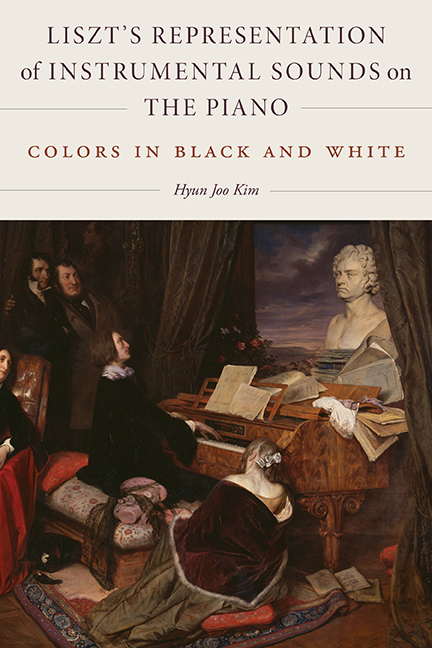Book contents
- Frontmatter
- Contents
- Introduction
- 1 Approaching the Reproductive Arts
- 2 “Partitions de Piano”
- 3 Between “Text” and “Event”: Liszt's Guillaume Tell Overture
- 4 Translating the Orchestra: Liszt's Two-Piano Arrangements of His Symphonic Poems
- 5 Interpretive Fidelity to Gypsy Creativity: Liszt's Representations of Hungarian Gypsy Cimbalom Playing
- Conclusions: Recurring Techniques and Aesthetics
- Appendix: Liszt's Preface to His Piano Arrangements of Beethoven's Fifth and Sixth Symphonies in the Breitkopf & Härtel Edition, 1840
- Notes
- Bibliography
- Index of Liszt's Works by Genre
- Subject Index
1 - Approaching the Reproductive Arts
Published online by Cambridge University Press: 06 September 2019
- Frontmatter
- Contents
- Introduction
- 1 Approaching the Reproductive Arts
- 2 “Partitions de Piano”
- 3 Between “Text” and “Event”: Liszt's Guillaume Tell Overture
- 4 Translating the Orchestra: Liszt's Two-Piano Arrangements of His Symphonic Poems
- 5 Interpretive Fidelity to Gypsy Creativity: Liszt's Representations of Hungarian Gypsy Cimbalom Playing
- Conclusions: Recurring Techniques and Aesthetics
- Appendix: Liszt's Preface to His Piano Arrangements of Beethoven's Fifth and Sixth Symphonies in the Breitkopf & Härtel Edition, 1840
- Notes
- Bibliography
- Index of Liszt's Works by Genre
- Subject Index
Summary
The celebrated engraver Luigi Calamatta reminisced vividly in his memoirs about his process of engraving Leonardo da Vinci's Mona Lisa, the long, drawnout saga of his thirty-year commitment to the project, and his anxiety over the considerable obstacles that lay in the path of a large-scale burin engraving:
I began to engrave the Mona Lisa in 1829 at Loro in the Marche, where I had to go for a change of air. Subsequently for a long period of years I could work on it only during the night, as I had to give my attention to the works that were commissioned from me. I experienced a great difficulty in engraving it, in view of the largeness and the forcefulness of the coloring. This can be obtained easily through broad and heavy cuts [but] in the Mona Lisa there are many details and finesses in the background, very many more in the folds of the veil that covers her and quite a few in the hair that I had to treat all in fine and strict work, and so the difficulty became greater. I know of no object more difficult to be followed in engraving…. The difficulty of the engraving is to be able to obtain, on the basis of an object, that it should be of the same material, of the same stuff and substance, alike in the clear, in the middle tints, and in the dark ones, and this is what I have sought with much effort through the combination of cuts and points. This is the thankless métier of the engraver, which is not appreciated and not even observed by almost anybody: to make it really felt through this work alone that this cloth is of silk, of veil, or of velvet, in all the movements made by the folds, is not an easy thing, any more than all the infinite varieties that a good engraver must express through the burin, to the end that everything can say—I am marble, wool, water, skin, etc.
Among the various techniques and media of printmaking, burin engraving, in which the engraver used a sharp tool to incise an image on copper plate, was the most prestigious, as well as the most labor-intensive and time-consuming, throughout the period under discussion.
- Type
- Chapter
- Information
- Liszt's Representation of Instrumental Sounds on the PianoColors in Black and White, pp. 14 - 36Publisher: Boydell & BrewerPrint publication year: 2019

